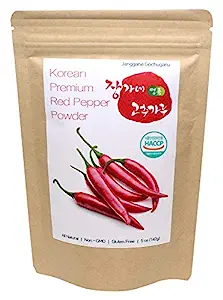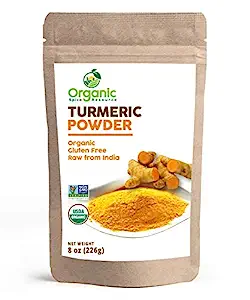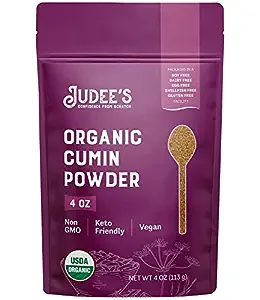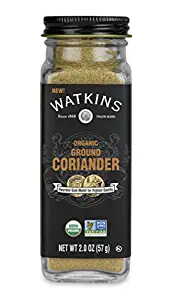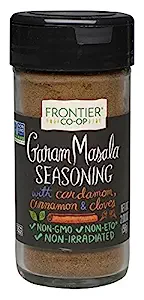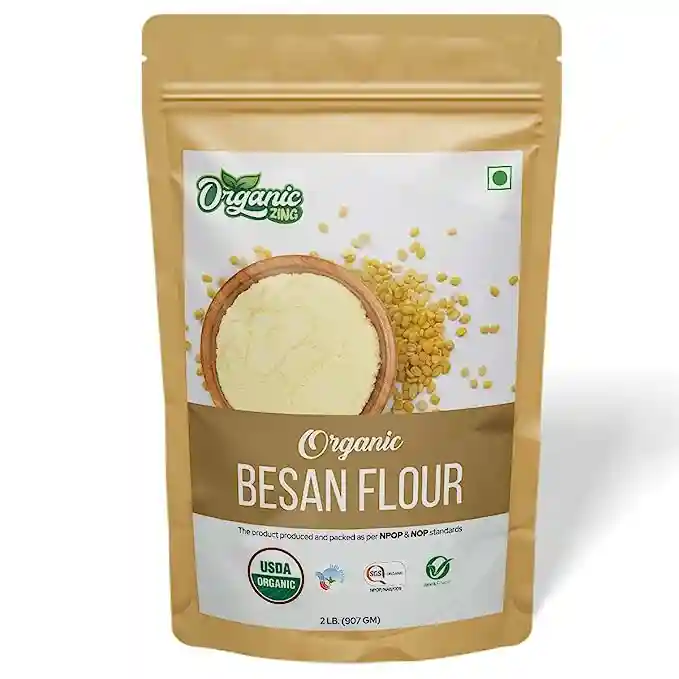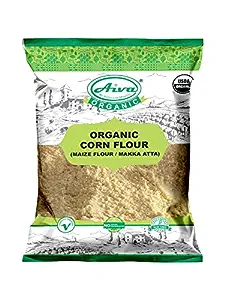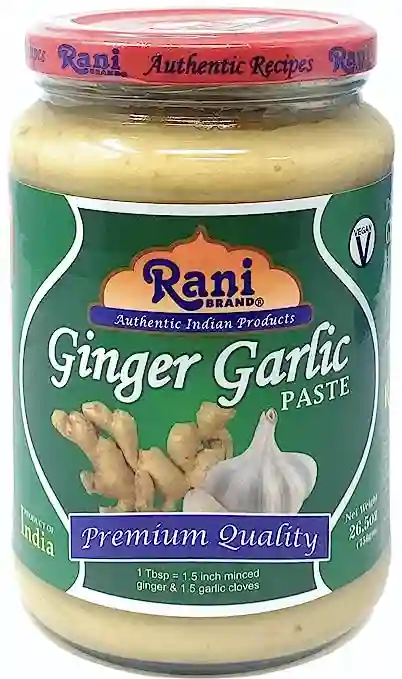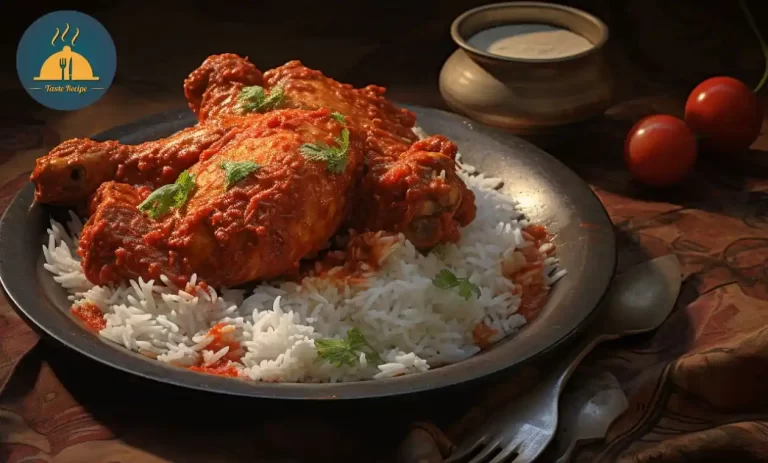The Art of Mastering Fried Soya Chaap
Fried Soya Chaap: A Fusion of Texture and Flavors

Fried Soya Chaap is a popular vegetarian dish that brings together the goodness of soya protein and the irresistible crunch of frying. This delightful dish is a perfect alternative for those seeking a meaty texture and satisfying flavors without the use of meat. With its crispy exterior and tender interior, fried soya chaap offers a unique culinary experience that appeals to both vegetarians and non-vegetarians alike.
What sets fried soya chaap apart is its perfect combination of crispy texture and mouthwatering flavors. The soya chaap is marinated in a blend of aromatic spices, creating a rich and savory profile. The process of frying adds a delightful crunch to the chaap, enhancing its overall appeal. Whether enjoyed as an appetizer, snack, or main course, fried soya chaap is sure to tantalize your taste buds and leave you craving for more.
In this blog, we will explore the art of preparing fried soya chaap, from marination techniques to frying tips, and present you with a variety of recipes and variations to suit your preferences. Get ready to embark on a culinary journey filled with crispy goodness and delicious flavors. Let’s dive into the world of fried soya chaap!
History and Significance
Soya chaap, also known as soybean chaap, is a vegetarian dish that traces its origins to North India. It is believed to have been created as a vegetarian alternative to meat-based chaap dishes commonly found in Punjabi cuisine. The use of soya chunks, derived from soybeans, provides a meaty texture and makes it an appealing option for vegetarians and those looking to reduce their meat consumption.
In Indian cuisine, soya chaap has gained popularity for its versatility and ability to absorb flavors. It is often marinated in a blend of spices, yogurt, and other seasonings, which infuse the chaap with a rich and aromatic taste. The marinated chaap is then cooked in various styles, including frying, grilling, or simmering in a flavorful gravy. This adaptability has contributed to the widespread acceptance and inclusion of soya chaap in different regional cuisines.
Fried soya chaap has garnered significant popularity not only in Indian cuisine but also in various other cuisines worldwide. Its unique texture and ability to absorb flavors make it a versatile ingredient that can be incorporated into diverse culinary traditions. In addition to Indian cuisine, you can find variations of fried soya chaap in Middle Eastern, Asian, and fusion cuisines.
The crispy exterior and succulent interior of fried soya chaap makes it a perfect appetizer or main course option. It is often served as a standalone dish or incorporated into wraps, rolls, and kebabs. The popularity of fried soya chaap can be attributed to its ability to provide a satisfying eating experience with its meaty texture, combined with the flavors and spices that are synonymous with the local cuisine.
As we delve into the world of fried soya chaap, we will explore the various culinary influences and regional adaptations that have contributed to its widespread appeal. Get ready to savor the delightful flavors and textures of fried soya chaap, and discover its significance in different cuisines around the world.
Ingredients
To prepare delicious fried soya chaap, you will need the following ingredients:
- Soya Chaap: High-quality soya chaap is the star ingredient of this dish. It is readily available in most grocery stores or can be made at home using soybean chunks or soya nuggets.
- Gram Flour (Besan): Gram flour is used to coat the soya chaap, giving it a crispy and golden texture when fried. Look for finely ground gram flour for the best results.
- Corn Flour: Corn flour helps in binding the gram flour coating to the soya chaap, ensuring a crispy exterior. It also adds a lightness to the coating.
- Ginger-Garlic Paste: A flavorful blend of fresh ginger and garlic adds a zingy taste to the marinade, enhancing the overall flavor profile of the fried soya chaap.
- Yogurt: Yogurt acts as a tenderizer and adds a tangy taste to the marinade. Opt for thick and creamy yogurt to achieve a rich and well-balanced flavor.
- Spices: Various spices like red chili powder, turmeric powder, coriander powder, cumin powder, garam masala, and chaat masala are used to season the soya chaap. Adjust the spice levels according to your preference.
- Salt: Essential for seasoning, salt enhances the overall taste of the dish. Use it judiciously to balance the flavors.
- Oil: A good-quality cooking oil with a high smoking point, such as vegetable oil or canola oil, is required for deep frying the soya chaap. It ensures a crisp and non-greasy texture.
Remember, the quality of the ingredients used directly affects the taste and texture of the fried soya chaap. So, choose your ingredients wisely to create a delightful and satisfying dish.
Classic Fried Soya Chaap
The classic style of fried soya chaap is renowned for its irresistible combination of a crispy exterior and a succulent, juicy interior. The soya chaap is marinated in a flavorful mixture of spices and yogurt, coated with a crispy batter, and deep-fried to golden perfection.
Here’s a step-by-step recipe to make classic fried soya chaap:
Ingredients:
- Soya Chaap: 6-8 pieces
- Gram Flour (Besan): 1 cup
- Corn Flour: ¼ cup
- Ginger-Garlic Paste: 1 tablespoon
- Yogurt: ¼ cup
- Red Chili Powder: 1 teaspoon
- Turmeric Powder: ½ teaspoon
- Coriander Powder: 1 teaspoon
- Cumin Powder: ½ teaspoon
- Garam Masala: ½ teaspoon
- Salt: to taste
- Oil: for deep frying
Instructions:
- In a bowl, combine yogurt, ginger-garlic paste, red chili powder, turmeric powder, coriander powder, cumin powder, garam masala, and salt. Mix well to form a smooth marinade.
- Add the soya chaap pieces to the marinade and coat them thoroughly. Let them marinate for at least 1 hour or overnight in the refrigerator for more intense flavors.
- In a separate bowl, combine gram flour and corn flour. Add a pinch of salt and mix well.
- Heat oil in a deep pan or kadai for frying. The oil should be moderately hot, around 180°C (350°F).
- Take each marinated soya chaap piece, allowing the excess marinade to drip off, and coat it evenly with the gram flour and corn flour mixture.
- Gently place the coated soya chaap pieces into the hot oil. Fry them in small batches to avoid overcrowding the pan.
- Fry the soya chaap until they turn golden brown and crispy, rotating them occasionally for even cooking. It may take around 5-6 minutes per batch.
- Once fried, remove the soya chaap from the oil using a slotted spoon and place them on a paper towel-lined plate to drain excess oil.
Tips for achieving the perfect texture and flavor:
- Ensure the soya chaap pieces are well-marinated to infuse them with flavors and tenderize them.
- Use a combination of gram flour and corn flour for the coating to achieve a crispy texture.
- Maintain the oil temperature while frying to ensure the chaap cooks evenly and becomes crispy without absorbing excess oil.
- Serve the fried soya chaap immediately after frying to enjoy its crispy texture to the fullest.
Enjoy the classic fried soya chaap as a delicious appetizer or as a part of your main course. It pairs well with mint chutney or tangy tamarind chutney.
Spicy Fried Soya Chaap
The spicy variation of fried soya chaap takes the classic recipe up a notch by adding an extra kick of heat and bold flavors. The combination of fiery spices and aromatic seasonings makes it an irresistible choice for those who love spicy food.
Here’s a recipe for spicy fried soya chaap:
Ingredients:
- Soya Chaap: 6-8 pieces
- Red Chili Powder: 1 tablespoon
- Kashmiri Red Chili Powder: 1 teaspoon (for vibrant color)
- Turmeric Powder: 1/2 teaspoon
- Coriander Powder: 1 teaspoon
- Cumin Powder: 1/2 teaspoon
- Garam Masala: 1 teaspoon
- Ginger-Garlic Paste: 1 tablespoon
- Lemon Juice: 1 tablespoon
- Salt: to taste
- Oil: for deep frying
Instructions:
- In a bowl, combine red chili powder, Kashmiri red chili powder, turmeric powder, coriander powder, cumin powder, garam masala, ginger-garlic paste, lemon juice, and salt. Mix well to form a thick paste.
- Add the soya chaap pieces to the spice paste and coat them evenly. Let them marinate for at least 1 hour to allow the flavors to penetrate.
- Heat oil in a deep pan or kadai for frying. The oil should be moderately hot, around 180°C (350°F).
- Carefully place the marinated soya chaap pieces into the hot oil. Fry them in small batches to ensure even cooking.
- Fry the chaap until they turn golden brown and crispy, flipping them occasionally for uniform frying. This may take around 5-6 minutes per batch.
- Once fried, remove the soya chaap from the oil using a slotted spoon and drain the excess oil on a paper towel.
The spicy fried soya chaap is perfect for spice enthusiasts and can be enjoyed as an appetizer or as a side dish with roti or naan. Serve it with mint yogurt dip or tangy tamarind chutney to balance the heat. Enjoy the tantalizing flavors and fiery kick of this delectable dish.
Creamy Fried Soya Chaap
The creamy style of fried soya chaap takes this dish to a whole new level of indulgence. It features a rich and luscious gravy that coats the crispy chaap, creating a harmonious blend of textures and flavors. The creaminess adds a touch of decadence to the dish, making it a delightful treat for your taste buds.
Here’s a recipe for creamy fried soya chaap:
Ingredients:
- Soya Chaap: 6-8 pieces
- Onion: 1 large, finely chopped
- Tomato: 2 medium-sized, pureed
- Cashew Nuts: 10-12, soaked in water for 15 minutes
- Ginger-Garlic Paste: 1 tablespoon
- Turmeric Powder: 1/2 teaspoon
- Red Chili Powder: 1 teaspoon
- Garam Masala Powder: 1 teaspoon
- Fresh Cream: 2 tablespoons
- Butter: 2 tablespoons
- Oil: for frying
- Salt: to taste
- Fresh Coriander Leaves: for garnishing
Instructions:
- Heat oil in a pan and fry the soya chaap until golden brown and crispy. Drain excess oil on a paper towel and set aside.
- In a separate pan, melt butter and add finely chopped onions. Sauté until onions turn golden brown.
- In a blender, grind the soaked cashew nuts to a smooth paste.
- Add ginger-garlic paste to the pan with onions and sauté for a minute until the raw smell disappears.
- Add tomato puree to the pan and cook until the oil separates from the masala.
- Stir in turmeric powder, red chili powder, garam masala powder, and salt. Cook for a minute to blend the spices.
- Add the cashew nut paste to the pan and mix well. Cook for a few minutes to allow the flavors to meld together.
- Pour in fresh cream and mix until well combined. Adjust the consistency of the gravy by adding water if needed.
- Add the fried soya chaap pieces to the creamy gravy and simmer for 5-7 minutes, allowing the chaap to soak up the flavors.
- Garnish with fresh coriander leaves and serve hot.
The creamy fried soya chaap is a perfect choice for those who enjoy rich and indulgent flavors. Serve it with naan, rice, or paratha for a satisfying meal. The creamy texture and delectable taste will surely leave you craving more. Enjoy the velvety goodness of this dish!
Special Recipe Variation
Introducing a special variation of fried soya chaap that combines the flavors of traditional tandoori spices with the crispy goodness of fried chaap. This recipe adds a delightful twist to the classic dish, infusing it with smoky and tangy flavors reminiscent of authentic tandoori preparations.
Here’s the recipe for Spicy Tandoori Fried Soya Chaap:
Ingredients:
- Soya Chaap: 6-8 pieces
- Hung Curd: 1/2 cup
- Ginger-Garlic Paste: 1 tablespoon
- Red Chili Powder: 1 teaspoon
- Turmeric Powder: 1/2 teaspoon
- Garam Masala Powder: 1 teaspoon
- Kasuri Methi (Dried Fenugreek Leaves): 1 tablespoon
- Lemon Juice: 1 tablespoon
- Chaat Masala: 1 teaspoon
- Salt: to taste
- Oil: for frying
- Fresh Coriander Leaves: for garnishing
- Lemon wedges: for serving
Instructions:
- In a mixing bowl, combine hung curd, ginger-garlic paste, red chili powder, turmeric powder, garam masala powder, kasuri methi, lemon juice, chaat masala, and salt. Mix well to make a marinade.
- Add the soya chaap pieces to the marinade and coat them evenly. Allow the chaap to marinate for at least 1 hour, or preferably overnight in the refrigerator.
- Heat oil in a pan or deep fryer for frying the marinated chaap.
- Fry the marinated chaap in hot oil until golden brown and crispy. Drain excess oil on a paper towel.
- Garnish with fresh coriander leaves and serve hot with lemon wedges.
This special variation of fried soya chaap combines the smoky and tangy flavors of tandoori spices with the crispy texture of the fried chaap. It makes for a perfect appetizer or snack option for your next gathering or special occasion. The marination process ensures that the flavors penetrate deep into the chaap, resulting in a delectable and flavorful dish.
Serve the Spicy Tandoori Fried Soya Chaap with mint chutney, onion rings, and lemon wedges to enhance the flavors. It pairs well with Indian breads like naan or roti, and can also be enjoyed as a standalone appetizer. Get ready to tantalize your taste buds with this unique and flavorful variation of fried soya chaap!
Our Recommended Ingredients
Red Chili Powder:
Red chili powder is a popular spice known for its vibrant color and fiery flavor. It adds a spicy kick to various dishes, including curries, marinades, and snacks. Premium Korean is a high-quality red chili powder that guarantees an authentic taste and consistent heat. Enhance your culinary creations with Premium Korean and elevate the flavors to a whole new level. Click here to purchase Premium Korean and spice up your meals!
Turmeric Powder:
Turmeric powder is a bright yellow spice widely used in Indian cuisine for its earthy flavor and health benefits. It adds a distinct color and subtle warmth to curries, rice dishes, and soups. Organic offers premium quality turmeric powder that is sourced from the finest turmeric roots. Incorporate Organic into your recipes and enjoy the rich flavor and vibrant color it brings. Click here to buy Organic and add a golden touch to your dishes!
Cumin Powder:
Cumin powder is a versatile spice that imparts a warm and earthy flavor to various dishes. It is commonly used in curries, spice blends, and marinades. Judee’s provides high-quality cumin powder that is aromatic and full of flavor. Elevate your culinary creations with the rich taste and aroma of Judee’s cumin powder. Click here to get Judee’s and enhance the depth of flavors in your recipes!
Coriander Powder:
Coriander powder is derived from ground coriander seeds and is known for its aromatic and citrusy flavor. It is a staple in Indian cooking, used in curries, marinades, and spice blends. Watkins offers premium coriander powder that is carefully processed to retain its freshness and aroma. Add Watkins coriander powder to your pantry for authentic flavors in your dishes. Click here to purchase Watkins and elevate your culinary experience!
Garam Masala Powder:
Garam masala powder is a fragrant blend of ground spices commonly used in Indian cuisine. It adds a warm and complex flavor to curries, rice dishes, and roasted vegetables. Frontier Co-op presents a high-quality garam masala powder made from a perfect blend of aromatic spices. Sprinkle Frontier Co-op garam masala powder in your dishes to enhance the taste and aroma. Click here to buy Frontier Co-op and experience the magic of this spice blend!
Gram Flour:
Gram flour, also known as besan, is a versatile ingredient used in various Indian dishes. It is made from ground chickpeas and has a nutty flavor and a smooth texture. Organic Zing offers premium quality gram flour that is finely ground and free from any additives. Use Organic Zing gram flour to prepare delicious snacks, batters, and fritters. Click here to get Organic Zing and add a touch of authenticity to your culinary creations!
Corn Flour:
Corn flour is a fine, powdery flour made from ground corn kernels. It is commonly used as a thickening agent in soups, sauces, and gravies. AIVA provides high-quality corn flour that is gluten-free and perfect for thickening and binding. Incorporate AIVA corn flour into your recipes to achieve the desired consistency and texture. Click here to purchase AIVA and enhance your cooking experience!
Ginger-Garlic Paste:
Ginger-garlic paste is a convenient and flavorful blend of ginger and garlic, commonly used in Indian cooking. It adds a unique zing and depth of flavor to curries, marinades, and stir-fries. Rani offers a premium quality ginger-garlic paste made from fresh ingredients for an authentic taste. Simplify your cooking process with Rani ginger-garlic paste and infuse your dishes with aromatic flavors. Click here to buy Rani and enhance the taste of your recipes!
Tips and Techniques
Marinating and Frying Tips for Soya Chaap
Marinating: To enhance the flavors and tenderness of soya chaap, marinating is essential. Here are some tips:
- Use a mixture of yogurt, spices, and seasonings to create a flavorful marinade.
- Ensure the soya chaap is well-coated with the marinade. You can use your hands to rub the marinade onto the chaap for better absorption.
- For best results, marinate the chaap for at least 2-3 hours, or overnight in the refrigerator. This allows the flavors to penetrate the chaap and tenderize it.
Frying Techniques
- Heat the oil to the right temperature: Maintain the oil temperature at around 180-190°C (350-375°F) for frying. If the oil is too hot, the chaap may burn quickly; if it’s not hot enough, the chaap may absorb excess oil and become greasy.
- Fry in batches: Avoid overcrowding the pan or fryer, as this can lead to uneven cooking. Fry the chaap in small batches, allowing enough space for them to cook evenly and maintain their crispiness.
- Drain excess oil: After frying, place the fried chaap on a paper towel-lined plate or rack to remove any excess oil.
Creating Different Marinades and Flavor Combinations:
- Experiment with spices: Besides the traditional marinades, you can try different spice combinations like peri-peri, Cajun, or barbecue seasoning for a unique twist.
- Incorporate herbs and aromatics: Add fresh herbs like mint, coriander, or basil to the marinade for a refreshing flavor. You can also include crushed garlic or grated ginger to enhance the taste.
- Play with sauces: Introduce various sauces like soy sauce, Worcestershire sauce, or hot sauce to the marinade to create different flavor profiles.
- Use citrus juices: Along with lemon juice, you can also try lime juice, orange juice, or even pineapple juice for a tangy and citrusy twist.
By following these marinating and frying tips, you can ensure that the soya chaap turns out flavorful, tender, and crispy. Additionally, experimenting with different marinades and flavor combinations allows you to customize the dish according to your preferences and create exciting variations of fried soya chaap.
Serving Suggestions
Accompaniments and Garnishes for Fried Soya Chaap
- Mint chutney: Serve fried soya chaap with a refreshing mint chutney, made with fresh mint leaves, coriander, green chilies, and yogurt. This tangy and herbaceous dip complements the flavors of the chaap.
- Onion and lemon wedges: Slice some onions and serve them alongside lemon wedges. Squeezing lemon juice over the chaap and pairing it with thinly sliced onions adds a zesty and crunchy element to the dish.
- Pickled vegetables: Add a tangy twist to your platter by serving fried soya chaap with pickled vegetables like sliced cucumbers, carrots, or radishes. The acidity of the pickles balances the richness of the chaap.
- Fresh salad: Accompany the chaap with a simple salad made with lettuce, cucumber, tomatoes, and a drizzle of lemon juice. The fresh and crisp salad provides a contrast to the fried chaap.
Creating Platters and Complete Meals
- Chaap Biryani: Layer fragrant basmati rice with cooked soya chaap in a biryani pot. Garnish with fried onions, saffron strands, and mint leaves. Serve the biryani with raita or a side salad for a complete and flavorful meal.
- Chaap Rolls or Wraps: Spread a layer of mint chutney or mayonnaise on a flatbread or tortilla. Place a few pieces of fried soya chaap and add sliced onions, tomatoes, and lettuce. Roll it up tightly and securely with a toothpick for a delicious and portable meal.
- Chaap Curry: Prepare a rich and flavorful curry using fried soya chaap as the main ingredient. Simmer the chaap in a tomato-based gravy, along with aromatic spices and cream. Serve it with naan or rice for a satisfying meal.
- Chaap Platter: Arrange a variety of fried soya chaap pieces on a platter, including different styles such as classic, spicy, creamy, and special variations. Garnish with fresh herbs, sliced onions, and lemon wedges. Serve with a selection of chutneys and sauces for dipping.
These serving suggestions allow you to present fried soya chaap in various ways, catering to different tastes and preferences. Whether you choose to serve it as an appetizer, part of a larger meal, or as a standalone dish, the accompaniments and platter ideas enhance the overall dining experience and add depth to the flavors of the fried soya chaap.
In Crux
In conclusion, fried soya chaap is a versatile and delicious vegetarian dish that offers a delightful combination of crispy texture and flavorful taste. We have explored various styles of fried soya chaap, including the classic, spicy, creamy, and special recipe variations. Each style brings its unique twist and offers a delightful culinary experience.
We encourage you to try the recipes provided and explore the world of fried soya chaap in your own kitchen. Experiment with different marinades, seasonings, and serving suggestions to create your signature version. Don’t forget to purchase the recommended products to enhance the flavors of your dish.
We would love to hear your feedback and experiences with fried soya chaap. Feel free to share your thoughts, suggestions, and any modifications you made to the recipes. Your valuable feedback will help us improve and provide you with more exciting culinary content.
So, gather your ingredients, get ready to fry up some delicious soya chaap, and embark on a culinary journey filled with flavors, textures, and a touch of creativity. Enjoy the mouthwatering experience of fried soya chaap and savor every bite. Bon appétit!
FAQs about Fried Soya Chaap
Can I reheat fried soya chaap?
Yes, you can reheat fried soya chaap to enjoy it again. To reheat, preheat your oven to 350°F (175°C) and place the fried soya chaap on a baking sheet. Heat it in the oven for about 10-15 minutes or until it is heated through and crispy again. You can also reheat it in an air fryer or stovetop using a non-stick pan with a little oil.
Can I use different marinades for fried soya chaap?
Absolutely! One of the great things about fried soya chaap is its versatility. You can experiment with different marinades to create unique flavor profiles. Try marinating the soya chaap in yogurt-based marinades with spices like turmeric, cumin, and paprika, or go for a tangy and spicy marinade with lemon juice, ginger-garlic paste, and red chili powder. Don't be afraid to get creative and tailor the marinade to your taste preferences.
Can I substitute the soya chaap with tofu or other protein alternatives?
Yes, if you prefer a different protein source or follow a specific dietary requirement, you can substitute the soya chaap with tofu or other plant-based protein alternatives. Keep in mind that the texture and cooking time may vary, so adjust the marination and frying process accordingly. Tofu can be a good option as it absorbs flavors well and can provide a similar texture when fried.
How can I make the fried soya chaap gluten-free?
If you need to make the fried soya chaap gluten-free, you can replace the all-purpose flour with gluten-free flour alternatives like rice flour or chickpea flour. Similarly, replace regular breadcrumbs with gluten-free breadcrumbs or crushed gluten-free cereal. Ensure that all the other ingredients used in the marinade and coating are also gluten-free.
Can I make fried soya chaap without deep-frying?
Yes, if you prefer a healthier cooking method, you can try baking or air frying the soya chaap instead of deep-frying. Coat the marinated soya chaap with a thin layer of oil and place it on a baking sheet or in an air fryer. Bake or air fry at a preheated temperature according to the recipe instructions, flipping halfway through for even cooking.


